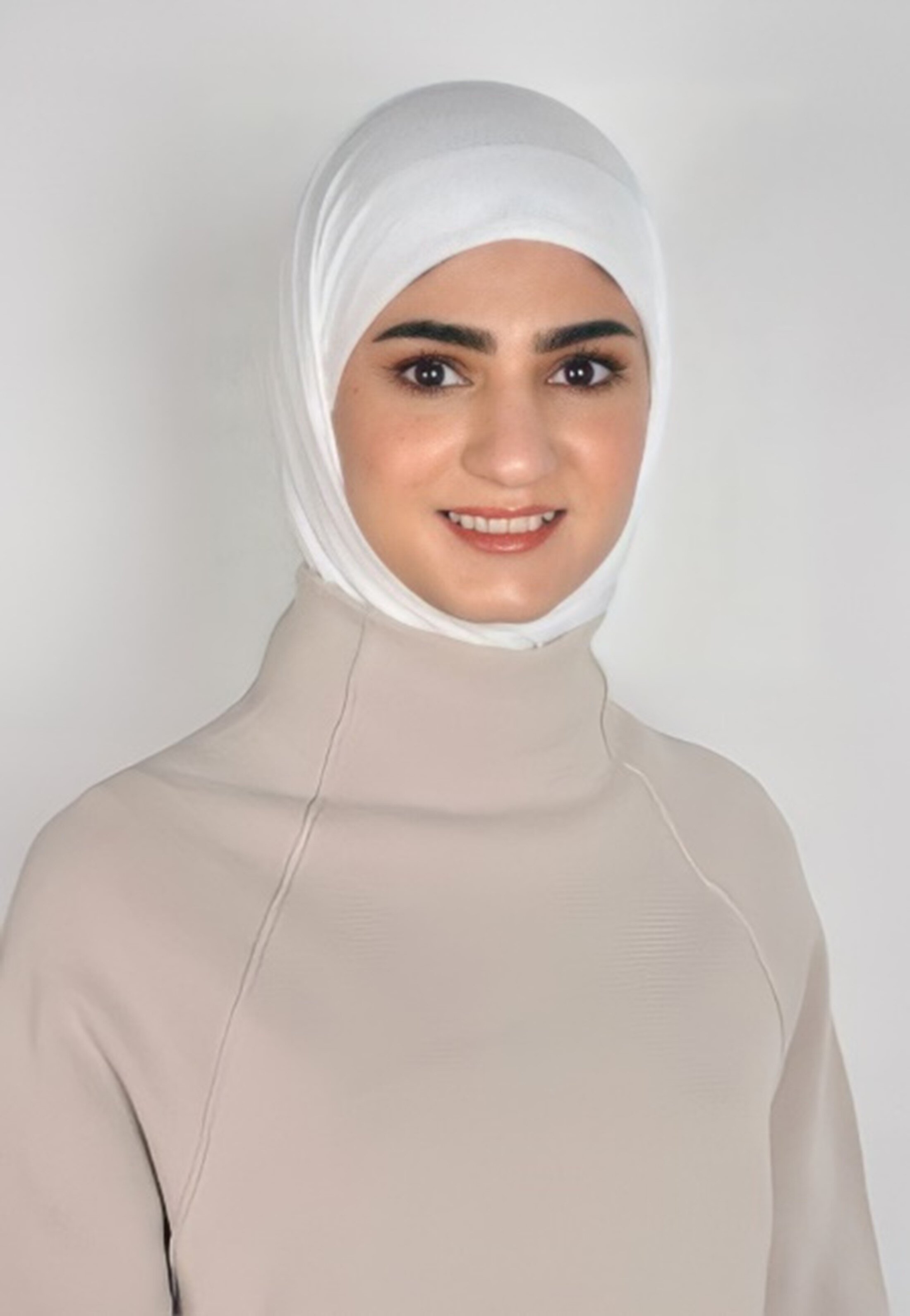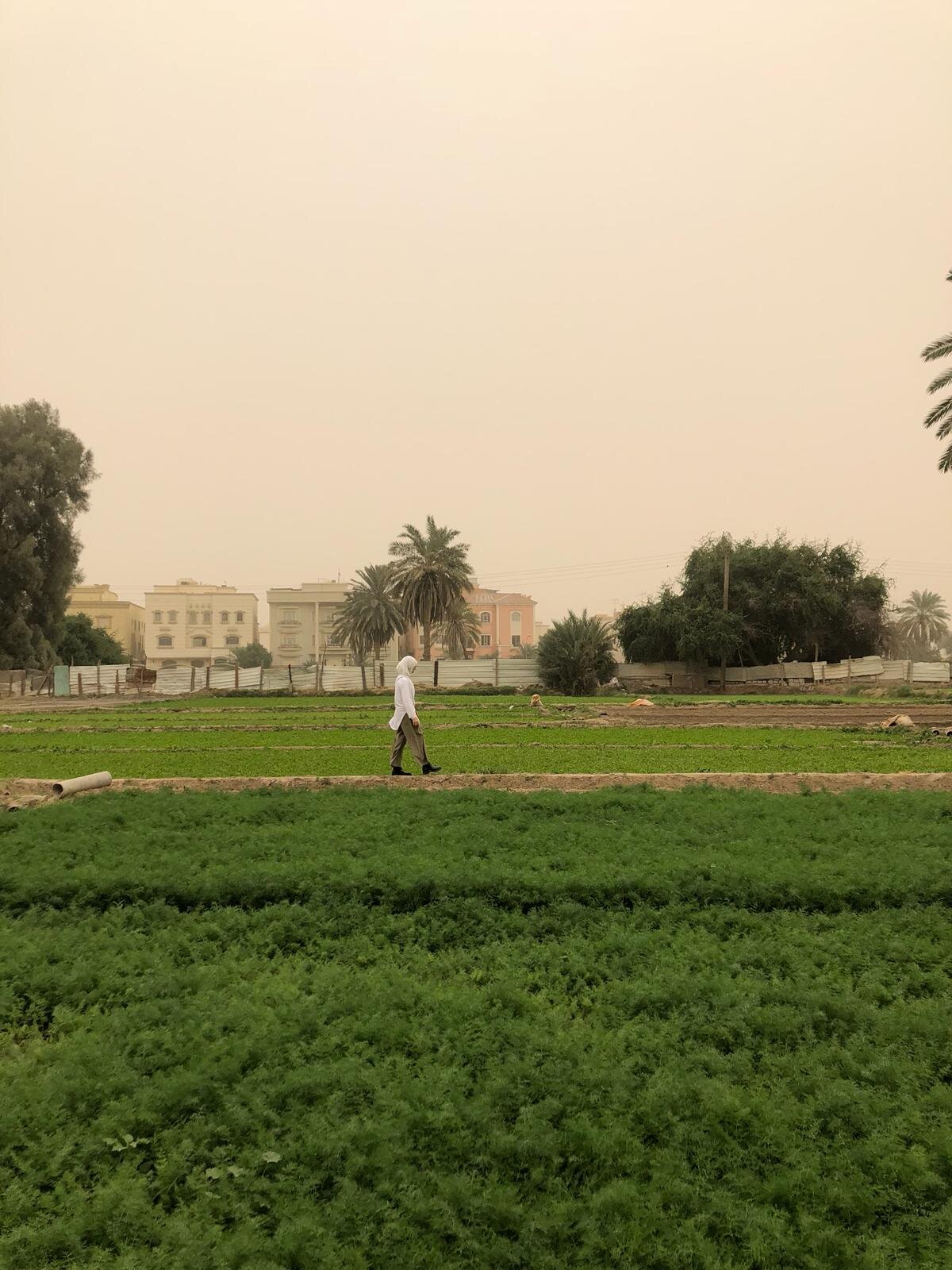BATOOL AL-SARRAF
Batool Al-Sarraf is an architect and graduate from Kuwait University’s Department of Architecture where she was awarded the Outstanding Graduation Project Award. Her work explores the simplification of large ideas, questions preconceived notions, as well as the relationship between architecture, culture, and beliefs.
She had previously won the Kuwait Waterfront Redevelopment Competition, held by the Kuwait Touristic Enterprise Company, as well as the Treehouse Design Competition for Shakshuka Farmers Market.
Batool considers herself to be a fast learner and an independent individual that does not fear going against the grain. She is fascinated by patterns and finds herself always trying to decode them to anticipate potential events.
She is currently enrolled in Kuwait Fund’s one-year Training Program for young Kuwaiti Architects and Engineers, a program established in support of the efforts on human development in the State of Kuwait by introducing a comprehensive and rigorous training program that prepares young graduates for the private workforce.
Where are you from?
Kuwait
What is your favorite dish?
Mix carb sandwich (macaroni sandwich) - only legends know it!
Three additional fun facts about Batool
Organizing and supplying people with food is a sacred ritual in my family, to the extent of ruining people’s diet on purpose.
I’m the first architect in my family. I knew nothing about architecture before studying it.
Exploring the Relationship Between Architecture, Culture, and Beliefs
What inspired you to study architecture?
As a child, I dreamed of drawing and building houses. When I grew a bit older, I developed an interest in reading architectural drawings as our house was being constructed. I remember spending hours trying to make sense of the lines in those drawings and what they may represent.
The existing condition for Salhiya Cemetery before intervention: Huge graveyard surrounded by governmental building from one side and commercial building from the other side. Image courtesy of Batool Al-Sarraf.
Name a woman architect (preferably Arab or Middle Eastern) who most influenced you as an emerging professional? Why or How did they?
I would say Aljoud Lootah from Lootah Studio. Although she is a product designer and not an architect, I appreciate her design thinking and how she derives her designs from her cultural roots and the familial environment she shares with her team.
Exploded diagram for design studio VI: A proposal for Kuwait Airways multi-purpose center designed by Batool Al-Sarraf and her partner, Ghadeer Mohammad. Image courtesy of Batool Al-Sarraf.
Name a favorite project completed by a Woman Architect (preferably Arab or Middle Eastern). Why is it your favorite?
The House in Mishref designed by Studio Toggle. It sits on 750 m2 plot, accommodating two brothers and their respective families with their varying lifestyles and needs for privacy and open spaces. I appreciate how the design fulfills the needs of the client while maintaining simplicity in the design, in addition to the introduction of a shared courtyard which is a climatically responsive traditional element from Kuwaiti architecture that also values privacy.
A physical model for Design Studio III: Jazeera Airways new terminal by Batool Al-Sarraf and Saba Al-Habashi. Image courtesy of Batool Al-Sarraf.
How does your culture/ethnicity affect your studies and the way you design?
After enrolling in a university and meeting people from varying backgrounds, I started to explore each culture and dig into its root cores. I always found myself looking for what we may share in common, and how similar our cultural roots are yet so different the paths we individually take are. This helped me develop a thinking process in my design work. It doesn’t matter if I start with a simple concept, because the process will only become more complex as I go with it.
Final review of Batool’s thesis. Image courtesy of Batool Al-Sarraf.
Are there any organizations that helped you grow in architecture? How did they help you grow?
DialogueX, a student-led platform in KU Architecture Department that encourages an open dialogue on the culture of design and promotes critical thinking and creative thought processes. Attending their dialogues enriched me, and I would always leave with either new perspectives on a subject or a completely new question to think about.
The assembly team of Sadu Pixel Matrix installation by Dr. Jawad Altabtabai from left to right: Fatmah Altabtabaei, Ghadeer Mohammad, Dr. Jawad Altabtabai, Batool Al-Sarraf, Nourah Alsulaili, Zainab Alansari. Image courtesy of Batool Al-Sarraf.
Tell us about your thesis, Reviving a Cemetery: Salhiya Cemetery. What inspired you to study this topic?
For my thesis, I was interested in how people were complaining that a prestigious mall-like Al-Salhiya was placed next to a huge cemetery - although the cemetery is only visible from the toilet windows of the mall. I started investigating more old cemeteries in Kuwait City and found 7 abandoned ones taking up a lot of space in the city. After further studies, I narrowed my interest to the invisible boundaries we construct as a society around death due to fear and wanted to propose a spatial solution to utilize those urban voids in a way that evokes and opens up discussions around death in the city.
Batool’s thesis, “Reviving a Cemetery” showing the ramp that takes the user to the mosque. Image courtesy of Batool Al-Sarraf.
Batool’s thesis, “Reviving a Cemetery.” A section through the cemetery to show the interior of the mosque and the library that rests on a platform above the graveyard. Image courtesy of Batool Al-Sarraf.
If you were able to talk to your younger self, what would you say?
Listen carefully to learn more. My enthusiasm to learn as a young student led me to lightly brushing on fundamental concepts, which made me miss out on deeper understanding during my first years in architecture school
Architecture Department in KU student work: Art piece exploring Arabic Calligraphy. Image courtesy of Batool Al-Sarraf.
What would you want to say to the next generation of aspiring Arab women architects?
Live the change you want to see. Don’t let your gender be an excuse for not working and focus on developing your work. Let your work speak for you [itself]. Always remember everyone comes from a different environment and has different standards, what seems right for you might seem wrong for others - don’t judge them based on your standards.
Graduation Ceremony with [From left to right] Asaiel Al Saeed, Kawthar Marafi, Ghadeer Mohammad, Batool Al-Sarraf, Fatmah Altabtabaei, Dr. Jawad Altabtabai. Image courtesy of Batool Al-Sarraf.
In terms of rising concerns and problems (in the architectural profession) over the past year, what is one change that you wish saw would happen and still did not?
Criticism is fundamental in the architecture profession, but it is often avoided because it is taken personally instead of learning from it. I notice its avoidance spreading widely in both the educational and professional atmospheres - leading people to miss out on a lot of opportunities to learn and develop. I wish we started using criticism to search for new solutions and possibilities while practicing architecture.
Image of Batool in Jahra farmlands in Kuwait: The only living example of a historically rural development independent from the City’s. Image courtesy of Batool Al-Sarraf.











![Graduation Ceremony with [From left to right] Asaiel Al Saeed, Kawthar Marafi, Ghadeer Mohammad, Batool Al-Sarraf, Fatmah Altabtabaei, Dr. Jawad Altabtabai. Image courtesy of Batool Al-Sarraf.](https://images.squarespace-cdn.com/content/v1/5f99c4b3495a7077cabeb145/1620011503499-W9G4VIEBWUA9NJB9GWPZ/Batool+Al-Sarraf+-+Image+9.jpg)
